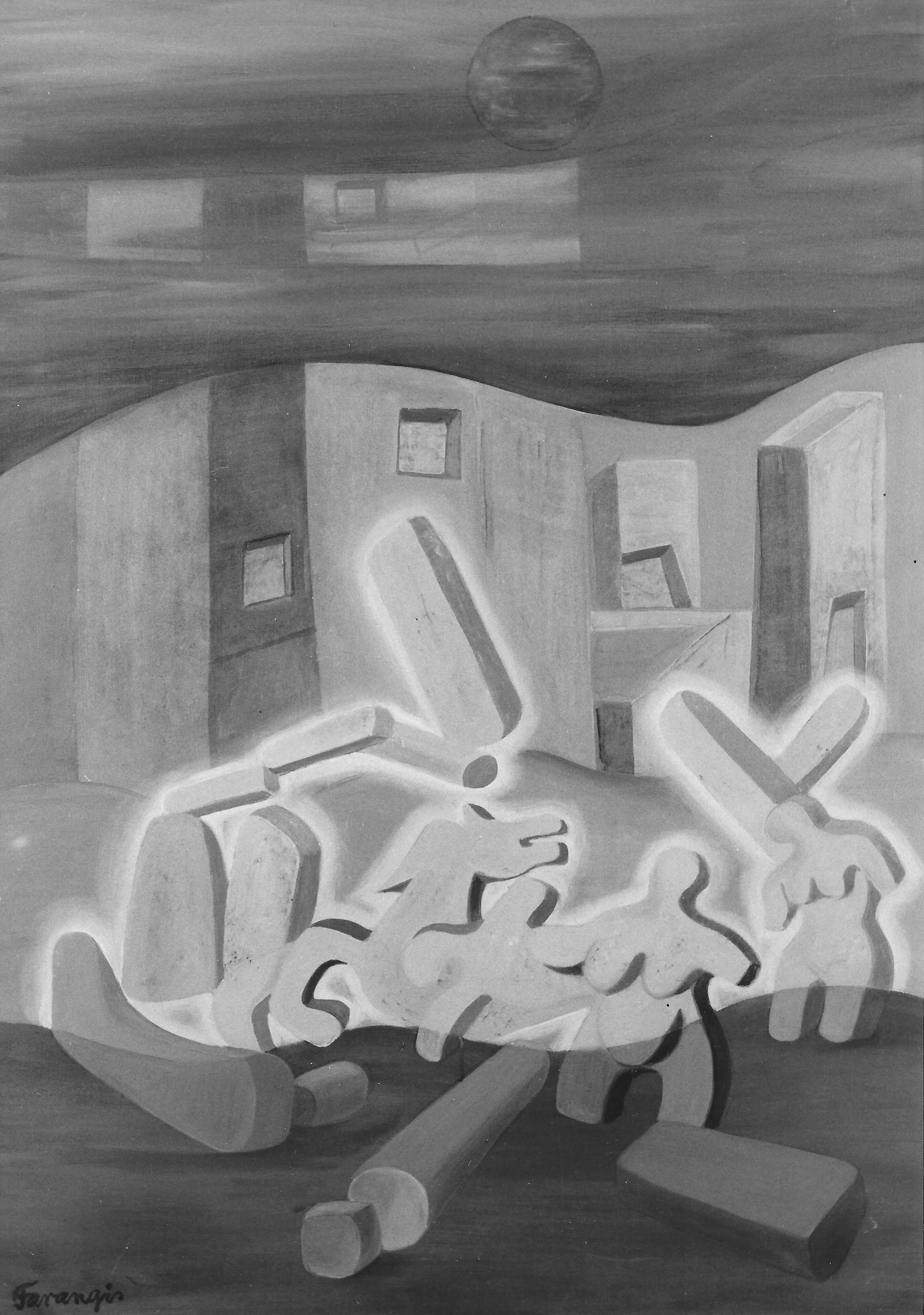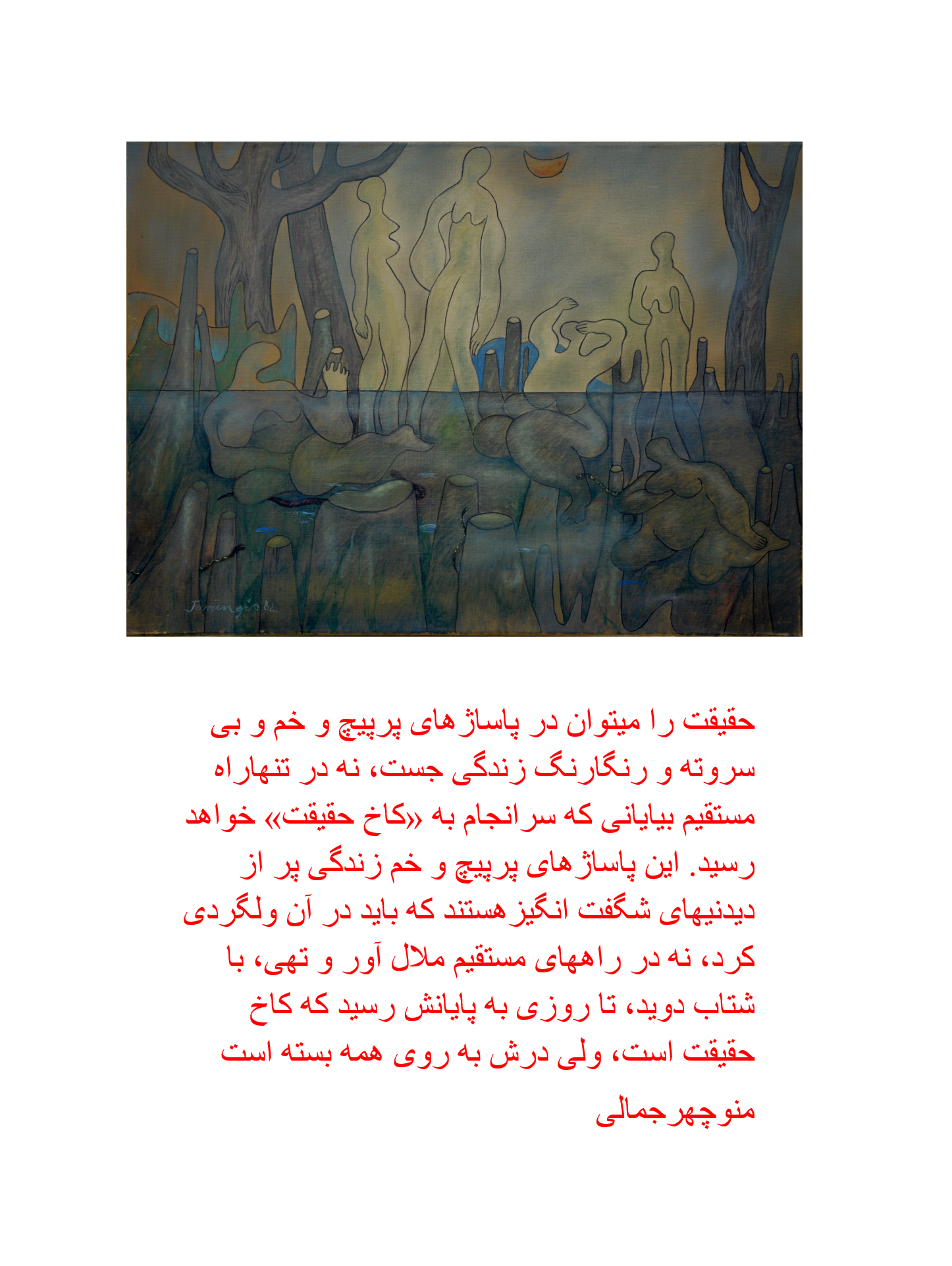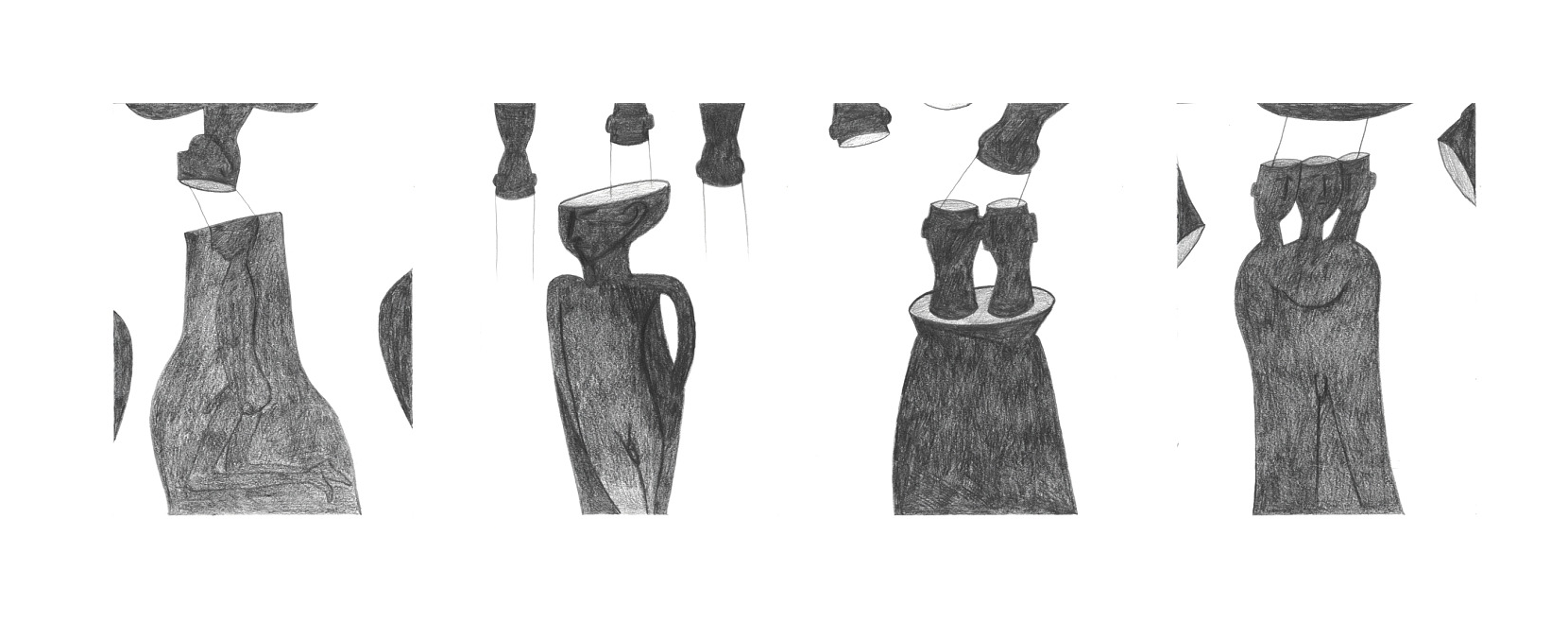فرهنگ مردم ایران باستان
فرهنگ عامیانه آئینه ای است از طرز فکر و باورهای مردم کوچه و بازار.
زنده یاد منوچهر جمالی با بهره گیری از واژه ها و اصطلاحات و اسطوره های ما موفق به کشف بسیاری از باورها و اعتقادات گذشته ما شده بود و آنها را در هشتاد و اندی کتاب که گنجینه ای از فرهنگ تاریخی ما هستند منعکس کرد.
با استفاده از دانش اتیمولوژی او موفق به تجزیه و تحلیل ساختار واژه های ایرانی شد و همانطور که اشاره شد با بهره گیری از اسطوره های ما و فرهنگ عامه و کنار هم گذاشتن این عناصر موفق به کشف فرهنگ زنخدائی ایران باستان با محوریت سیمرغ یا نماد این زن خدا شد .
این باور پیش از زرتشتی گری یا مزدائیزم در ایران و کشورهای دور و نزدیک رایج بود و اساسش بر مبنای زندگی هماهنگ با طبیعت و حفظ محیط زیست و پرهیز از کشتن حیوانات و آلوده کردن طبیعت بود.
متاسفانه این فرهنگ جامعه را در مقابل تهاجم اقوام بیگانه بیدفاع میکرد از اینرو به گفته جمالی تحولی بنیادین پیدا می کند و تقریبا به ضد خود تبدیل میشود بطوریکه در اروپا میتراس یا پسر میترا خدای جنگ میشود.
معابد میترائیستی زیادی در اروپا پیدا شده که معمولا در زیر زمین ساخته میشدند و در آنها تصویر میتراس در حال کشتن گاو بر دیوار ها کشیده شده است.
به تعبیر جمالی کشتن گاو نشانه ای از تحول باور میتراییستی اولیه که در آن کشتن حیوانات ممنوع بود، است.
درمعبد میترائیستی که معمولا برای خواص و نه عوام بودند شخص تازه وارد به فرقه آنها می بایست از هفت مرحله که نخستین آنها مرحله کلاغ و آخرین آنها مرحله پدر بود بتدریج در طول حیاتش بگذرد. بسیاری از باورهای آنها بسیار شبیه باورهای درویشی است و بسیاری باور دارند که مراحل عرفان همان باورهای میترائیستی گذشته اند که تا حدی تغییر شکل داده اند.
تجزیه و تحلیل مراحل میترائیستی و مراحل عرفانی در این پست کوتاه نمی گنجد.
باورهای سیمرغی یا میتراییستی دوره نخستین پیش از تحول میترا به میتراس یا خدای جنگ، امروزه بسیار مدرن و امروزی به نظر میرسند و هرچه زمان می گذرد بیشتر متوجه ارزشهای محیط زیستی و انسان دوستانه آنها می شویم.
دکتر فرزاد وحید
—
Die Kultur des alten Iran
Die Volkskultur spiegelt die Denkweise und den Glauben der Menschen in den Gassen und auf den Märkten wider. Dem verstorbenen Manuchehr Jamali gelang es, mithilfe unserer Wörter, Begriffe und Mythen viele unserer früheren Glaubensvorstellungen und Überzeugungen zu entdecken und sie in rund achtzig Büchern zu reflektieren, die eine wahre Fundgrube unserer historischen Kultur darstellen.
Mithilfe seiner etymologischen Kenntnisse gelang es ihm, die Struktur iranischer Wörter zu analysieren. Wie bereits erwähnt, gelang es ihm, durch die Nutzung unserer Mythen und Volkskultur und deren Zusammenführung, die Kultur der alten iranischen Göttinnen zu entdecken, deren Mittelpunkt der Simorgh, das Symbol dieser Göttin, war.
Dieser Glaube war im Iran und in nahen und fernen Ländern schon vor dem Zoroastrismus oder dem Mazdaismus weit verbreitet. Seine Grundlage war ein Leben im Einklang mit der Natur, der Schutz der Umwelt und die Vermeidung von Tiertötungen und Umweltschädigungen.
Leider machte diese Kultur die Gesellschaft schutzlos gegenüber der Invasion durch fremde Stämme. Jamali zufolge erlebte sie daher einen grundlegenden Wandel und verkehrte sich beinahe in ihr Gegenteil, sodass Mithras oder seine Nachfolge in Europa zu einem Kriegsgott wurde.
In Europa wurden zahlreiche Mithräen gefunden, die meist unterirdisch [oder in Felsen gehauen] errichtet wurden und deren Wände mit dem Bild von Mithras‘ Stiertötung bemalt sind. Jamali zufolge ist die [Abbildung der] Stiertötung ein Zeichen für die Fortentwicklung des ursprünglichen Mithrasglaubens gewesen, in dem das Töten von Tieren verboten war.
Im Mithraeum, das in der Regel einer Elite und nicht dem einfachen Volk vorbehalten war, musste ein Neuankömmling im Laufe seines Lebens sieben Stufen durchlaufen: die erste war die Rabenstufe und die letzte die Stufe des Vaters. Viele ihrer Glaubensvorstellungen ähneln stark dem der Derwische, und es wird häufiger angenommen, dass die Stufen der Mystik dieselben sind, wie die der mithraeischen Glaubensvorstellungen, die sich jedoch im Laufe der Zeit gewandelt haben.
Eine Analyse der mithraischen und mystizistischer Stufen geht über den Rahmen dieses kurzen Beitrags hinaus. Die simorgischen oder frühmithraischen Glaubensvorstellungen aus der frühen Zeit – d.h. vor Mithras‘ Verwandlung in Mithras, den Kriegsgott – wirken heute sehr modern und zeitgemäß, und mit der Zeit werden wir uns ihrer ökologischen und humanitären Werte immer bewusster.
Dr. Farzad Vahid
—
The culture of ancient Iran
Popular culture reflects the way of thinking and beliefs of the people in the alleys and markets. The late Manuchehr Jamali succeeded in using our words, concepts and myths to discover many of our past beliefs and convictions and reflect them in around eighty books, which are a veritable treasure trove of our historical culture.
Using his etymological knowledge, he was able to analyze the structure of Iranian words. As already mentioned, by using our myths and folk culture and bringing them together, he was able to discover the culture of the ancient Iranian goddesses, the center of which was the Simorgh, the symbol of this goddess.
This belief was widespread in Iran and in countries near and far even before Zoroastrianism or Mazdaism. It was based on living in harmony with nature, protecting the environment and avoiding killing animals and damaging the environment.
Unfortunately, this culture made the society vulnerable to invasion by foreign tribes. According to Jamali, it therefore underwent a fundamental change and almost turned into its opposite, so that Mithras or his heir in Europe became a god of war.
Numerous mithraeums have been found in Europe, most of which were built underground [or carved into rock] and whose walls are painted with the image of Mithras killing the bull [the tauroctony]. According to Jamali, [the image of] the killing of the bull was a sign of the progression of the original belief in Mithras, in which the killing of animals was forbidden.
In the Mithraeum, which was generally reserved for an elite and not the common people, a newcomer had to pass through seven stages in the course of his life: the first was the raven stage and the last was the father stage. Many of their beliefs are very similar to those of the dervishes, and it is frequently assumed that the stages of mysticism are the same as those of the Mithraic beliefs, which have changed over time.
An analysis of the Mithraic and mystic stages is beyond the scope of this short article. The Simorgic or ancient Mithraic beliefs from the early period – i.e. before Mithras’ transformation into Mithras, the god of war – seem very modern and contemporary today, and with time we are becoming more aware of their ecological and humanitarian values.
Dr. Farzad Vahid
—











